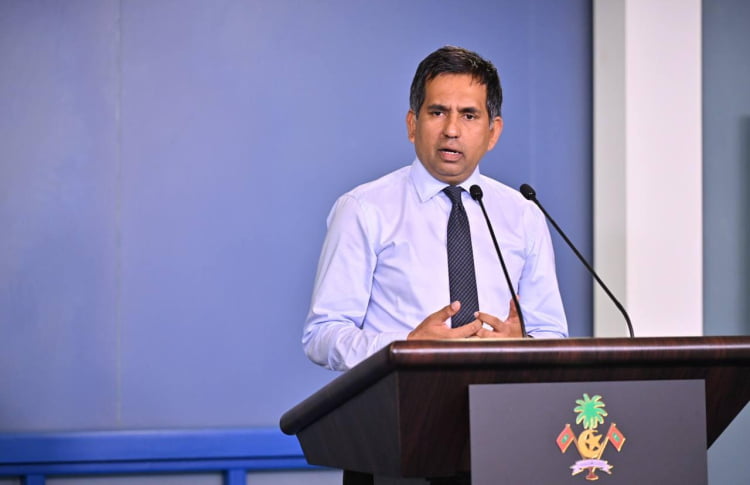
The Maldivian Housing Crisis
The Maldives, known for its picturesque landscapes and tourism-driven economy, has been grappling with a significant housing crisis. Rapid urbanization and limited land availability in the greater Male area have led to skyrocketing rent prices, particularly affecting low- to middle-income families. As the population continues to grow, the demand for affordable housing has outpaced supply, exacerbating the financial strain on average Maldivian citizens.
Historically, the Maldives has faced numerous challenges in its housing sector. Previous governments have made various attempts to address the issue, initiating housing schemes and projects aimed at increasing the availability of affordable apartments. However, these efforts have often fallen short, unable to keep up with the rising demand and urban expansion.
Low- and middle-income families bear the brunt of the housing shortage, as their limited financial resources restrict their access to the now-pricier rental market. The lack of affordable living spaces has pushed many into substandard housing conditions, further highlighting the urgent need for sustainable housing solutions. Rent prices in the greater Male area continue to rise, placing an additional burden on these families, who already struggle to make ends meet.
The most recent initiative by the Maldivian government, in collaboration with Exim Bank, promises the development of 4,000 additional flats, aiming to alleviate the housing pressures throughout the greater Male area. This new development is a critical response to the housing crisis, aiming to provide much-needed relief to those most affected by high rental costs. The project signals a dedicated effort to not only increase housing availability but also to stabilize rent prices, benefiting the wider economy and social fabric of the Maldives.
By understanding the gravity and history of the Maldivian housing crisis, one can appreciate the significance of such governmental measures. The upcoming stages of the housing project hold substantial promise for improving living conditions and economic stability for many Maldivians in the near future.
Government Efforts and Announcements
The Maldivian government has been actively engaging in robust initiatives to combat the daunting housing shortage afflicting the nation, particularly in the Greater Malé region. In a recent landmark announcement, Finance Minister Dr. Mohamed Shafeeq revealed an ambitious plan to develop an additional 4,000 housing apartments. This significant project will be financed through a substantial line of credit extended by India’s Exim Bank. The intervention aims squarely at mitigating the upward spiral of rent prices that have placed substantial financial strain on Maldivians, particularly young families and working professionals.
This latest development effort builds on prior housing policies implemented under previous administrations. Notably, the Gedhoruveriya scheme introduced during former President Ibrahim Mohamed Solih’s tenure also leveraged financial arrangements with Exim Bank. This scheme focused on creating affordable housing units that significantly contributed toward easing the housing burden, although demand continues to outstrip supply.
The forthcoming 4,000 flats, supported by Exim Bank’s line of credit, project a noticeable step forward in the government’s long-term housing strategy. Statistical projections are optimistic, with anticipations set for reducing the housing deficit markedly. The strategic placement of these new apartments within the Greater Malé area is calculated to maximize accessibility to essential resources and employment hubs, thereby enhancing residents’ quality of life.
Data from previous projects under the Gedhoruveriya scheme reveal a tangible decrease in rent prices and better living conditions for many Maldivians. By continuing this trajectory with the new initiative, the government expects to achieve even more pronounced results. Should these efforts under Exim Bank financing succeed, it could establish a viable model for future housing projects not only in Malé but across other islands in the archipelago.
Through these targeted measures, the Maldivian government underscores its commitment to resolving the housing crisis, ensuring its citizens can secure affordable and comfortable living conditions amidst an increasingly challenging economic climate.
Current Demand and Challenges
The demand for affordable housing in the greater Male’ area has been surging over the years, driven by rapid urbanization and limited land availability. As the population continues to grow, the supply of housing remains significantly inadequate, resulting in a stark disparity. This shortage has culminated in soaring property prices, exacerbating the housing crisis. Rent prices in greater Male’ have reached unsustainable levels, consuming a substantial fraction of citizens’ monthly incomes. This financial strain extends beyond rental payments, impinging on households’ ability to allocate resources to other essential needs.
Social and economic ramifications of this housing crunch are profound. Families find themselves dedicating over half of their earnings to housing costs, leaving insufficient funds for necessities such as education, healthcare, and savings. This financial burden hampers their overall quality of life, escalating stress and limiting opportunities for upward mobility. Moreover, the high cost of living in greater Male’ affects various socioeconomic groups, with middle and low-income families being the hardest hit. The pressing need for affordable housing solutions has become increasingly evident as more families struggle to make ends meet in this urban setting.
Real-life stories underscore the plight faced by residents. For instance, Aishath, a single mother of two, narrates her struggles: “Each month, I pay almost 60% of my salary on rent. What’s left is barely enough to cover basic needs. I’m always worried about unexpected expenses.” Similarly, Mohamed, a school teacher, highlights the predicacy: “With high rent prices, saving for my children’s education feels like a distant dream.” These testimonies reflect the widespread impact of the housing crisis, underscoring the urgency for viable, long-term solutions.
The Maldives government’s initiative to construct 4,000 additional flats in Greater Malé is a significant step towards mitigating the growing housing demand and escalating rent prices. This proactive approach aims to provide relief to many families grappling with limited housing availability. Nevertheless, the effectiveness of this project will largely depend on its timely completion and the equitable allocation of these apartments.
The infusion of 4,000 new residences into the housing market is anticipated to alleviate some pressure by increasing the supply of available homes. However, given the rapid urbanization and the influx of people moving into Greater Malé seeking better opportunities, this measure alone may not be a panacea for the region’s housing dilemmas. Assessing the population growth trends and future housing demands is critical to ensure that the delivery of these apartments will indeed bridge the housing gap.
Exploring alternative housing solutions is paramount. Public-private partnerships could play a crucial role in supplementing governmental efforts. These collaborations might accelerate development processes and introduce innovative housing models. Moreover, implementing sustainable building practices is essential to meet environmental standards while ensuring robust and resilient infrastructure. Sustainable designs could include energy-efficient buildings, use of locally-sourced materials, and incorporation of green spaces to improve residents’ quality of life.
Land reclamation projects also present an opportunity to expand usable land in the densely populated Greater Malé region. By carefully planned expansion, it is possible to balance the urban sprawl with preservation of the natural marine ecosystem – a critical aspect for an island nation like Maldives.
Long-term strategies must focus on maintaining a harmonious equilibrium between urban development and environmental conservation. A comprehensive urban development plan encompassing smart city initiatives, efficient public transportation systems, and preservation of natural resources will ensure the Maldives’ sustainable growth. These steps, combined with ongoing and future housing projects, are expected to provide a robust framework for addressing current and future housing demands in the Maldives.







